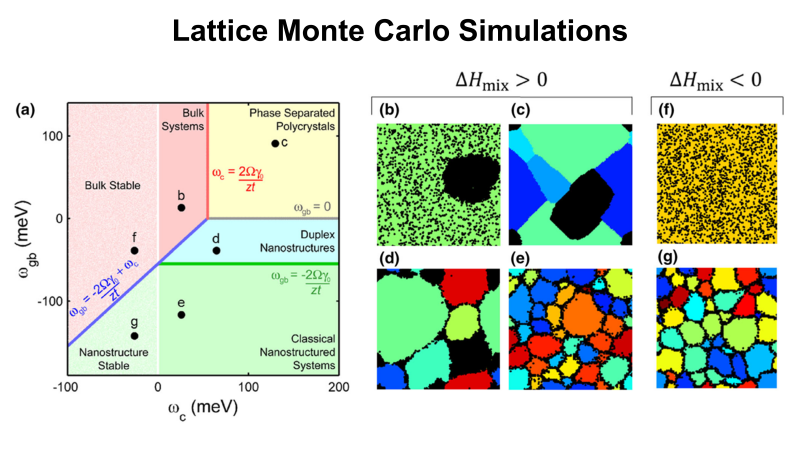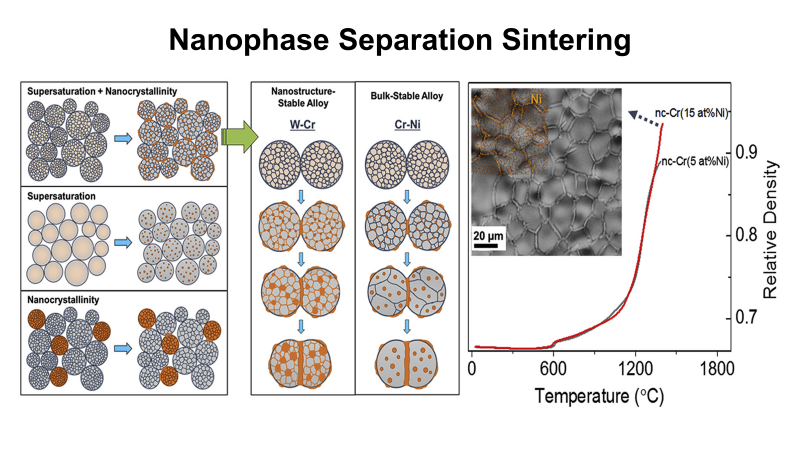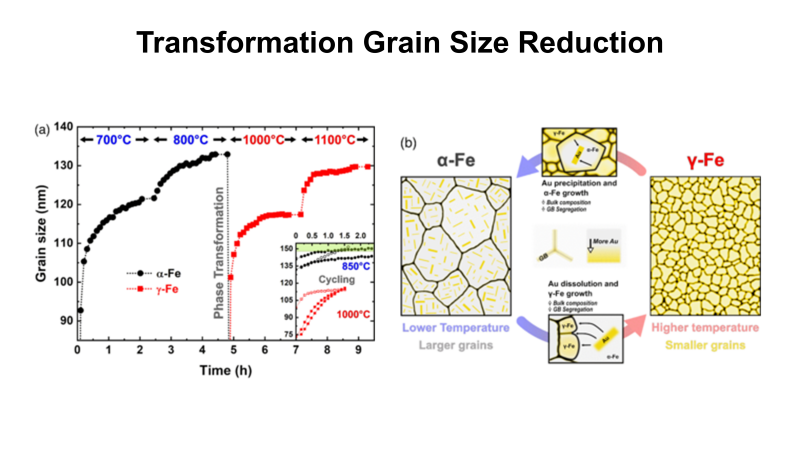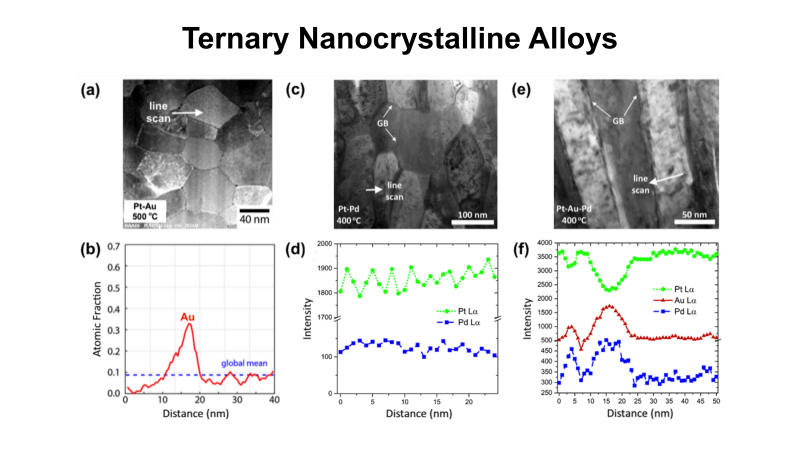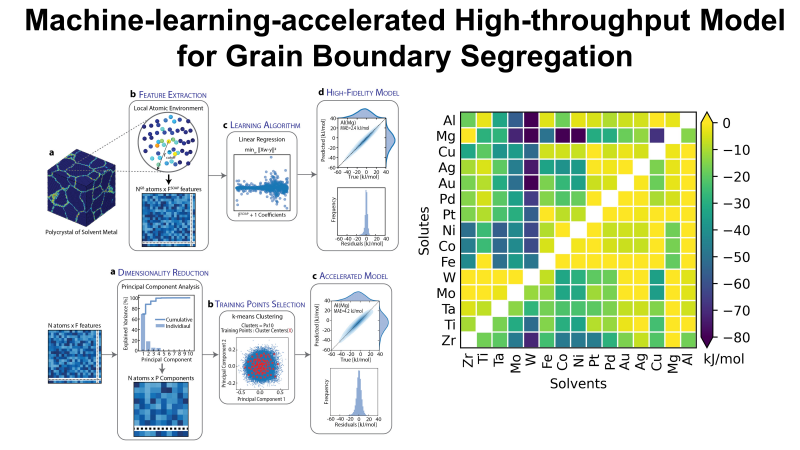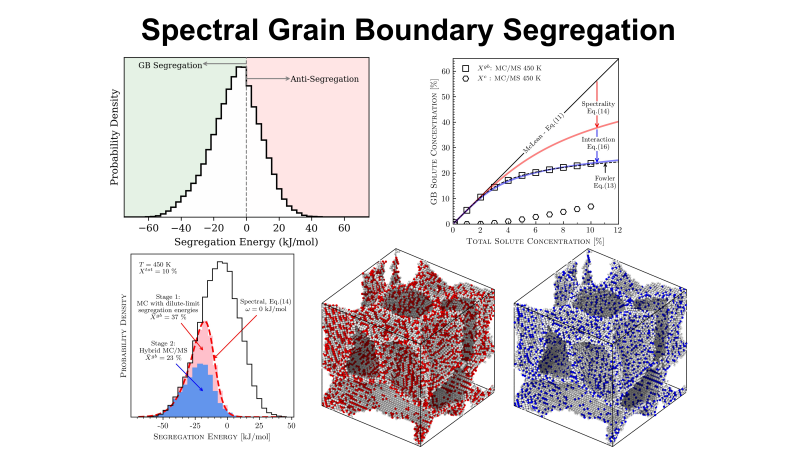Nanocrystalline alloys exhibit a wide range of both mechanical and functional properties that often exceed what is achievable at the microscale. However, they are often in unstable, nonequilibrium states due to a high concentration of grain boundaries that contribute to a large driving force for grain growth at the nanoscale.
In pursuit of stable nanocrystalline alloys, the Schuh group works to further develop the thermodynamic theory for nanocrystalline alloys and provide accurate and tractable means of screening alloys for nanocrystalline stability. Recent developments in this area include the combination of traditional segregation isotherms with a specific-segregation-site-based analysis to create models that can treat complex systems, including polycrystals, as well as the production of a machine-learning framework for rapidly predicting segregation behavior based on local atomic environment. Atomistic and mesoscale simulation are used to explore the stability of a wide range of binary alloys within the context of these models. Alloy systems explored computationally are then experimentally validated via advanced characterization techniques such as XRD, TEM, and APT. Recently, this work has extended to exploring the stability of ternary nanocrystalline alloys.
The Schuh group also explores approaches to produce nanocrystalline and fine-grained material in bulk form. This is currently being explored by two avenues. The first approach is the design of alloys that exhibit nanophase separation sintering (NPSS), a process which takes advantage of a nanocrystalline powder ejecting a solute that forms transient phase interparticle necks at low temperature. Through subsequent interdiffusion, the powder achieves accelerated, pressureless sintering to full density without promoting grain growth. Current efforts seek to identify and explore new alloy systems that may exhibit NPSS, as well as refine design criteria and application concepts for NPSS.
The second avenue is through the reduction of grain size via post-processing of alloys that exhibit a complete solid-solid phase transition. This allotropic transition can be used as an interface-generating mechanism and cycled to obtain reduced grain sizes after a part has been produced. The goal of the research is to explore this process as a potential means to obtain a stable nanocrystalline state through simple thermal processing.
Featured Work on Nature Computational Science
Our recent work on applying QM-MM method to estimate grain boundary segregation energy distributions is featured in Nature Computational Science!
Read more about the work here.
A challenge to the sintering of nanocrystalline metals
Nanocrystalline metals are highly defected structures that accelerate sintering. We study the kinetic competition between low-temperature densification and organic removal and develop a grain size dependent map, which allows to predict the sintering behavior of a broad range of materials.
Read more on Acta!
Spectrum of Grain Boundary Segregation Entropy
Grain boundaries contain a broad range of segregation sites. We have estimated distributions of grain boundary segregation entropy, and found a correlation between site-wise segregation energy and entropy. The spectra along with a spectral thermodynamic model shall provide an insight into extracting segregation entropy from experiments.
Learning Grain-Boundary Segregation: From First Principles to Polycrystals
Our new publication on shows how to overcome the limited availability of interatomic potentials by combining machine learning with first-principles calculations to study grain boundary solute segregation.
Mo-Cr Nanophase Separation Sintering
Mo-Cr system shows promising properties for high temperature applications. Check out how nanophase separation accelerates sintering in Mo-Cr system on Materialia!
Solute segregation at nanocrystalline grain sizes
Understanding solute segregation as a function of grain size is important to the design of nanocrystalline alloys.
Check out our new paper on how grain size and triple junctions influence grain boundary solute segregation at the nanocrystalline limit on Acta Materialia!

